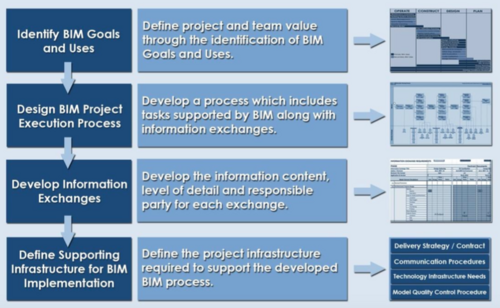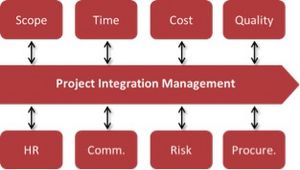BIM as a project management tool on construction projects
(→Planning and Execution) |
(→Planning and Execution) |
||
| Line 43: | Line 43: | ||
|- | |- | ||
| Design brief | | Design brief | ||
| − | | 0 | + | | style="text-align:center;"| 0 |
| − | | 0 | + | | style="text-align:center;"| 0 |
| − | | 0 | + | | style="text-align:center;"| 0 |
| − | | 0 | + | | style="text-align:center;"| 0 |
| | | | ||
| − | | 0 | + | | style="text-align:center;"| 0 |
|- | |- | ||
| Conceptual design | | Conceptual design | ||
| − | | | + | | style="text-align:center;"| 1 |
| − | | 1 | + | | style="text-align:center;"| 1 |
| | | | ||
| | | | ||
| Line 63: | Line 63: | ||
| Preliminary design | | Preliminary design | ||
| style="text-align:center;"| 2 | | style="text-align:center;"| 2 | ||
| − | | 2 | + | | style="text-align:center;"| 2 |
| − | | 2 | + | | style="text-align:center;"| 2 |
| | | | ||
| − | | 4 | + | | style="text-align:center;"| 4 |
| | | | ||
|- | |- | ||
| Line 80: | Line 80: | ||
| Detailed design | | Detailed design | ||
| − | | 4 | + | | style="text-align:center;"| 4 |
| − | | 4 | + | | style="text-align:center;"| 4 |
| − | | 4 | + | | style="text-align:center;"| 4 |
| | | | ||
| − | | 5 | + | | style="text-align:center;"| 5 |
| | | | ||
|- | |- | ||
| Line 92: | Line 92: | ||
| | | | ||
| | | | ||
| − | | 5 | + | | style="text-align:center;"| 5 |
| − | | 5 | + | | style="text-align:center;"| 5 |
| | | | ||
|- | |- | ||
| As Built | | As Built | ||
| − | | 6 | + | | style="text-align:center;"| 6 |
| − | | 6 | + | | style="text-align:center;"| 6 |
| − | | 6 | + | | style="text-align:center;"| 6 |
| − | | 6 | + | | style="text-align:center;"| 6 |
| − | | 6 | + | | style="text-align:center;"| 6 |
| | | | ||
|- | |- | ||
| Line 112: | Line 112: | ||
| | | | ||
| | | | ||
| − | | 6 | + | | style="text-align:center;"| 6 |
|- | |- | ||
|} | |} | ||
Revision as of 21:22, 21 September 2015
This article will introduce how BIM is used as a project management tool and its underlying practices. Furthermore the different application areas and limitations of BIM will be discussed.
A Building Information Model (BIM) is a digital representation of the physical and functional characteristics of a project. BIM tools are used to develop and share information throughout construction projects. The concept of BIM has existed since the 1970s, but has only recently been considered as a fundamental project management tool, due to the many benefits associated with the use of BIM. These benefits have changed the way construction projects are managed, and can be considered a milestone in project management. Despite the benefits, the use of BIM as a project management tool is still in the early stages of development, and there are still many challenges and barriers associated with its use.
The implementation of BIM has proven successful in newer projects to address the fragmentation issues, which heavily impacts the efficiency of construction projects. Using BIM as a project management tool has shown to be a promising instrument to address these fragmentation issues and achieve better integration within construction projects.
Contents |
Overview
Application context
The project participants of Construction projects are constantly being challenged to deliver successful and effective projects despite limited resources and tight schedules. Due to this pressure, which is often placed on the project participants, coordination and sharing of information becomes paramount. Construction projects are also heavily impacted by an increasing degree of fragmentation. This fragmentation occurs due to the large number of specialised actors that usually are involved in construction projects working towards a common goal. The need for a large number of specialised actors becomes even more critical, as construction project complexity increases. This also drives an even larger requirement for the integration between the different actors.
Development History
Utilisation of BIM
Planning and Execution
BIM utilises many benefits throughout construction projects and can be implemented at many phases throughout a project. When implementing BIM, the current technology, training, and costs of implementation relative to added value must always be considered when determining the appropriate areas and levels of detail needed in the information modeling processes. Hence In order to successfully implement BIM, a project team must perform comprehensive and detailed planning in the early stages of a project in order to maximise value while minimising the cost and impact of the modeling implementation [1].
It is important for the project participants to develop a execution plan when implementing BIM, in order to successfully integrate BIM into the project processes. Similar to a project plan, this should be developed in the early stages of a project and must be continually monitored, updated and revised as changes are made to the project or its participants. The planning procedure should consist of four steps as illustrated in figure XX. The four steps consists of identifying the appropriate BIM goals and uses on a project, designing the BIM execution process, defining the BIM deliverables, and identifying the supporting infrastructure to successfully implement the plan [1].
By developing a BIM Plan, the project and project team participants can achieve the following value according to the BIM execution planning guide [1].:
- All parties will clearly understand and communicate the strategic goals for implementing BIM on the project
- Organisations will understand their roles and responsibilities in the implementation
- The team will be able to design an execution process which is well suited for each team member’s business practices and typical organisational workflows
- The plan will outline additional resources, training, or other competencies necessary to successfully implement BIM for the intended uses
- The plan will provide a benchmark for describing the process to future participants who join the project
- The purchasing divisions will be able to define contract language to ensure that all project participants fulfil their obligations.
- The baseline plan will provide a goal for measuring progress throughout the project.
To further enhance cooperation and information sharing throughout the project process, the BIM planning should follow information levels. Information levels correspond to the level of detail in the associated digital representation of a project [2]. Utilising information levels when working with BIM tools, aids towards creating a more structured project, where milestone and phases will be used as assembly points for the different information levels and disciplines. The table below illustrated how the different construction phases are used as assembly points for the required information level across various project disciplines:
| The construction phases | Architect | Structural engineer | Building services engineer | Contractor | Supplier | Client |
|---|---|---|---|---|---|---|
| Design brief | 0 | 0 | 0 | 0 | 0 | |
| Conceptual design | 1 | 1 | ||||
| Preliminary design | 2 | 2 | 2 | 4 | ||
| Scheme design | ||||||
| Detailed design | 4 | 4 | 4 | 5 | ||
| Construction | 5 | 5 | ||||
| As Built | 6 | 6 | 6 | 6 | 6 | |
| Operation and maintenance | 6 |
Application areas
As mentioned before, construction projects are heavily affected by a high degree of fragmentation, which puts a increasing pressure on new project management tools and practises to increase integration within projects. As stated in ISO-21500 [3], a project can be split into several subject and process groups. Furthermore, according to ISO-21500 "Project management is the application of methods, tools, techniques and competencies to a project. Project management includes the integration of the various phases of the project life cycle", hence, In order to achieve a better degree of Project Integration Management, improvements must be made on the before mentioned subject groups throughout the project life cycle, as illustrated in figure 2 [4].
Use and benefits
Stakeholder
Scope
A variety of tools can be used to define and control the scope of the project. 3D modelling provide the means to create an early visualisation of the project, giving the client a better ability to assess whether the project meets the requirements for form and function.
Human resources
The easy information sharing, made possible by the implementation of BIM also effects the human resources of construction projects. Data collection, extractions and communication software makes it possible to create a better overview of the relationsship between the different disciplines, while improving upon the estimation, control and management of human resources during the different phases of a project. The easy flow of information also makes it possible to optimise the resource consumption, whether traditional project management is used or if Lean Project Management is implemented, as illustrated in figure XX:
Time
Gantt Chart Critical Path Method in Construction Industry
Cost
Risk
Minimizing Risk and Uncertainties in Construction Projects
Quality
Procurement
Communication
Communication in Project Management
Limitations
Case studies
Discussion and conclusion
References
- ↑ 1.0 1.1 1.2 The computer integrated construction research program at the Pennsylvania State University 2010 “BIM Project Execution Planning Guide”
- ↑ Bips, Digital constructions 2006. “3D Working Method 2006”
- ↑ ISO21500. 2012. Guidance on Project Management. International Organization for Standardization.
- ↑ Andersson, N. 2015 “BIM-based Management of Construction presentation”, June 2015, DTU

